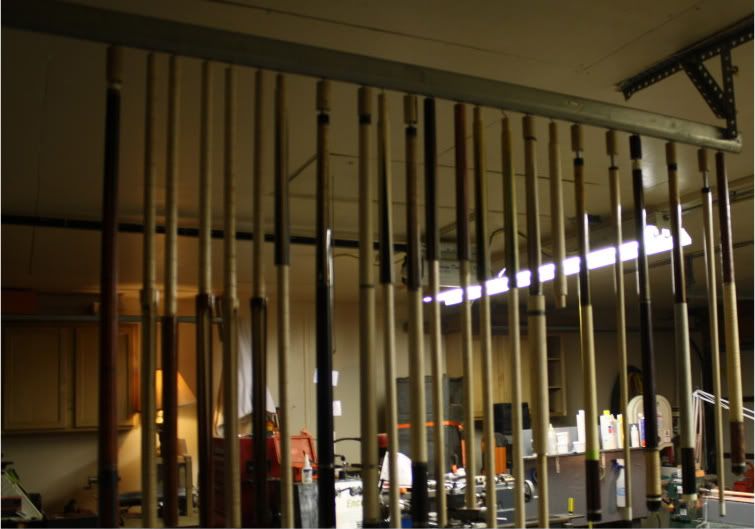I couldn't sleep this morning so I wrote this. I was going to post this next to the cue case at our local pool hall and would appreciate your opinions.
A Few Words On Warpage
When a cue warps it is normally the OWNER'S FAULT:
Custom cue makers go to great lengths to ensure that your cue never warps. This can include taking
8 or more cuts on a shaft over the course of 6 months(some even more) to ensure movement never
occurs. Many will also use sealers to help keep the water(yes there is water in your cue)
content consistent throughout the life of the cue.
Wood WILL move if you don't take care of your cue properly. Next time you are at Home Depot,
have a look at ends of various pieces of Douglas Fir(cut and processed ASAP because of demand) and
notice how many are split at the end or simply not straight. This is because as the wood ages it dries
faster out of the endgrain than other portions of the lumber and why you would see a wax coating on
ends of more expensive wood(like ebony) at a store like Woodcraft. You should NEVER leave your
cue in your car. This is the easiest way to ensure your cue sees an untimely death and the reason it no
longer rolls flat.....anywhere. Remember, your cue contains water, metal, and most likely a few other
materials. Temperature changes the dimensions of every element that resides in your cue and each
reacts differently. Heat makes things expand and cold makes them contract. You can't escape this fact
so don't make a science experiment out of your cue.
This is why very few makers warranty against warpage. I know everyone hates knowing that their
cue is “warped”, but a slight “warp” is nothing to be concerned about. I'm not saying you should
“expect” your cue to warp, only rationalizing that, even with the best of care, some can occur and it
is nothing to worry about.
A Few Words On Warpage
When a cue warps it is normally the OWNER'S FAULT:
Custom cue makers go to great lengths to ensure that your cue never warps. This can include taking
8 or more cuts on a shaft over the course of 6 months(some even more) to ensure movement never
occurs. Many will also use sealers to help keep the water(yes there is water in your cue)
content consistent throughout the life of the cue.
Wood WILL move if you don't take care of your cue properly. Next time you are at Home Depot,
have a look at ends of various pieces of Douglas Fir(cut and processed ASAP because of demand) and
notice how many are split at the end or simply not straight. This is because as the wood ages it dries
faster out of the endgrain than other portions of the lumber and why you would see a wax coating on
ends of more expensive wood(like ebony) at a store like Woodcraft. You should NEVER leave your
cue in your car. This is the easiest way to ensure your cue sees an untimely death and the reason it no
longer rolls flat.....anywhere. Remember, your cue contains water, metal, and most likely a few other
materials. Temperature changes the dimensions of every element that resides in your cue and each
reacts differently. Heat makes things expand and cold makes them contract. You can't escape this fact
so don't make a science experiment out of your cue.
This is why very few makers warranty against warpage. I know everyone hates knowing that their
cue is “warped”, but a slight “warp” is nothing to be concerned about. I'm not saying you should
“expect” your cue to warp, only rationalizing that, even with the best of care, some can occur and it
is nothing to worry about.
